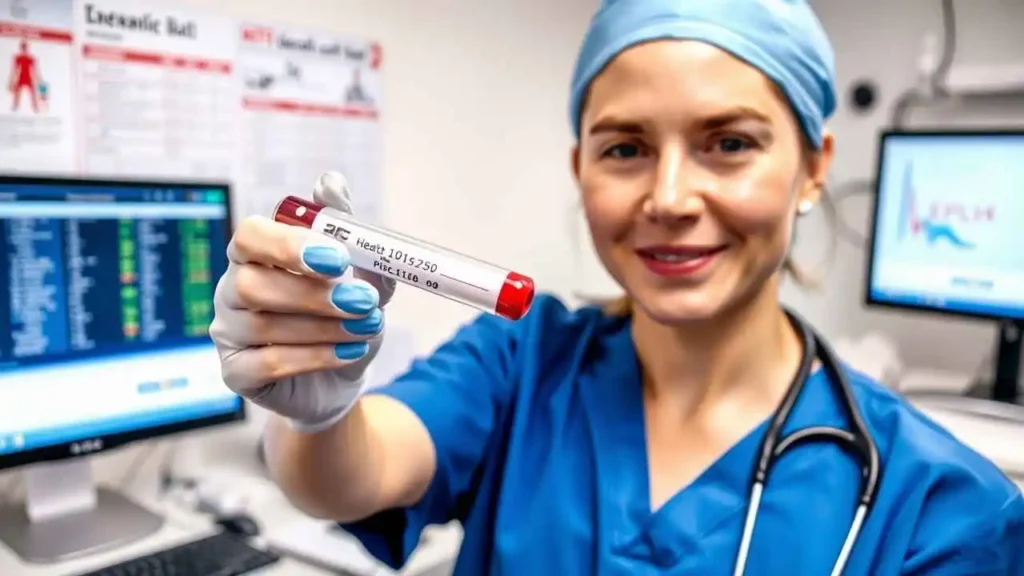
Comprehensive Guide to Various Blood Tests: Types and Detailed Descriptions
Blood tests are essential diagnostic tools that provide valuable insights into a person’s health. They help detect diseases, monitor medical conditions, and evaluate how well treatments are working. There are numerous types of blood tests, each designed to measure different components or functions of the blood. This article explores the various blood tests available along with detailed descriptions of each.
1. Complete Blood Count (CBC)
Purpose:
The Complete Blood Count (CBC) is one of the most common blood tests and provides a comprehensive overview of the cells in the blood, including red blood cells (RBCs), white blood cells (WBCs), hemoglobin, hematocrit, and platelets.
Details:
- Red Blood Cells (RBCs): Carry oxygen from the lungs to the rest of the body. Low RBC counts may indicate anemia.
- White Blood Cells (WBCs): Fight infection. High or low counts can signal infections, immune system disorders, or bone marrow issues.
- Hemoglobin: The oxygen-carrying protein in RBCs.
- Hematocrit: The proportion of blood volume occupied by RBCs.
- Platelets: Help with blood clotting. Low levels may cause bleeding problems.
Uses:
Diagnosing anemia, infections, clotting disorders, and monitoring overall health.
2. Basic Metabolic Panel (BMP)
Purpose:
The BMP measures basic electrolytes and metabolites in the blood to assess metabolism and organ function.
Details:
- Glucose: Blood sugar level, important for diabetes diagnosis.
- Calcium: Vital for bones, muscles, nerves, and heart function.
- Electrolytes: Sodium, potassium, chloride, and bicarbonate levels — essential for fluid balance and heart rhythm.
- Blood Urea Nitrogen (BUN) and Creatinine: Indicators of kidney function.
Uses:
Evaluating kidney function, blood sugar levels, electrolyte balance, and acid-base balance.
3. Comprehensive Metabolic Panel (CMP)
Purpose:
The CMP includes all tests in the BMP plus additional tests to assess liver function.
Details:
- Includes BMP components plus:
- Albumin: A protein made by the liver, indicating nutritional status and liver function.
- Total Protein: Measures total amount of proteins in blood.
- Liver Enzymes: Alanine aminotransferase (ALT), aspartate aminotransferase (AST), alkaline phosphatase (ALP) — elevated levels may indicate liver damage.
- Bilirubin: A waste product from the breakdown of red blood cells; high levels may cause jaundice.
Uses:
Checking liver health, nutritional status, and overall metabolism.
4. Lipid Panel (Lipid Profile)
Purpose:
Measures the levels of different types of cholesterol and fats in the blood.
Details:
- Total Cholesterol
- Low-Density Lipoprotein (LDL): “Bad” cholesterol that can build up in arteries.
- High-Density Lipoprotein (HDL): “Good” cholesterol that helps remove LDL.
- Triglycerides: A type of fat linked to heart disease risk.
Uses:
Assessing risk of cardiovascular disease and guiding treatment for cholesterol management.
5. Thyroid Function Tests
Purpose:
Evaluate how well the thyroid gland is working.
Details:
- Thyroid-Stimulating Hormone (TSH): Regulates thyroid hormone production.
- Free T4 (Thyroxine) and Free T3 (Triiodothyronine): Active thyroid hormones controlling metabolism.
Uses:
Diagnosing hypothyroidism, hyperthyroidism, and other thyroid disorders.
6. Coagulation Tests
Purpose:
Assess blood clotting ability.
Details:
- Prothrombin Time (PT): Measures how long blood takes to clot.
- International Normalized Ratio (INR): Standardized PT used to monitor blood-thinning medications like warfarin.
- Activated Partial Thromboplastin Time (aPTT): Evaluates intrinsic clotting pathway.
Uses:
Diagnosing bleeding disorders and monitoring anticoagulant therapy.
7. Hemoglobin A1c (HbA1c)
Purpose:
Measures average blood sugar levels over the past 2-3 months.
Details:
Reflects the percentage of hemoglobin molecules bound with glucose.
Uses:
Diagnosing and monitoring diabetes management.
8. Blood Culture
Purpose:
Detects presence of bacteria or fungi in the bloodstream.
Details:
Blood samples are incubated to allow microorganisms to grow for identification.
Uses:
Diagnosing bloodstream infections such as sepsis.
9. Vitamin and Mineral Tests
Purpose:
Assess levels of specific vitamins and minerals.
Examples:
- Vitamin D: Important for bone health.
- Vitamin B12: Necessary for nerve function and red blood cell production.
- Iron Studies: Includes serum iron, ferritin, total iron-binding capacity (TIBC) to evaluate iron status.
Uses:
Detecting deficiencies or toxicities.
10. Immunological Tests
Purpose:
Evaluate immune system status or detect specific antibodies.
Examples:
- Antibody tests: For infections like HIV, hepatitis, or autoimmune diseases.
- Allergy testing: Detects specific allergen sensitivities.
Uses:
Diagnosing infections, autoimmune disorders, and allergies.
Understanding Common Blood Tests: A Comprehensive Guide to CBC, BMP, Lipid Profile, LFTs, KFTs, TFTs, and Blood Glucose Tests
Blood tests are fundamental tools in modern medicine, offering crucial insights into our overall health and guiding physicians in diagnosing and managing various medical conditions. As we navigate our health journeys, understanding what these tests measure and how to interpret their results empowers us to take an active role in our well-being. In this article, we will explore seven essential blood tests—Complete Blood Count (CBC), Basic Metabolic Panel (BMP), Lipid Profile, Liver Function Tests (LFTs), Kidney Function Tests (KFTs), Thyroid Function Tests (TFTs), and Blood Glucose Tests—discussing their purposes, components, and implications for health.
“An ounce of prevention is worth a pound of cure.” – Benjamin Franklin
1. Complete Blood Count (CBC)
The Complete Blood Count (CBC) is one of the most commonly ordered blood tests. It provides a detailed snapshot of the cellular components of blood, helping to detect a wide range of disorders, including anemia, infection, and blood cancers.
Components of CBC:
| Parameter | Description | Normal Range (Adult) |
| White Blood Cells (WBC) | Fight infection | 4,000–11,000 cells/µL |
| Red Blood Cells (RBC) | Carry oxygen | Men: 4.7–6.1 million/µL Women: 4.2–5.4 million/µL |
| Hemoglobin (Hb) | Oxygen-carrying protein in RBCs | Men: 13.8–17.2 g/dL Women: 12.1–15.1 g/dL |
| Hematocrit (Hct) | Percentage of RBCs in blood volume | Men: 40.7–50.3% Women: 36.1–44.3% |
| Platelets | Aid in blood clotting | 150,000–450,000 platelets/µL |





